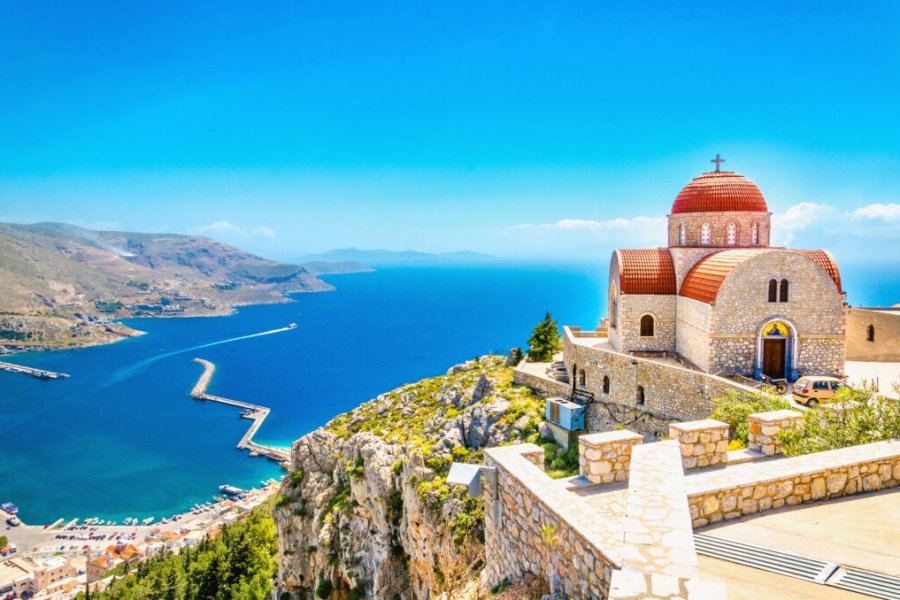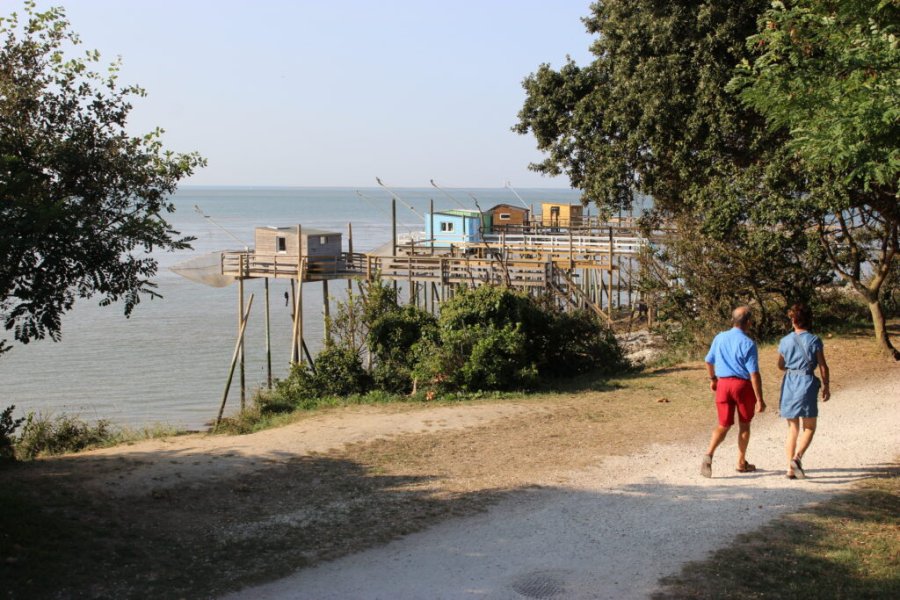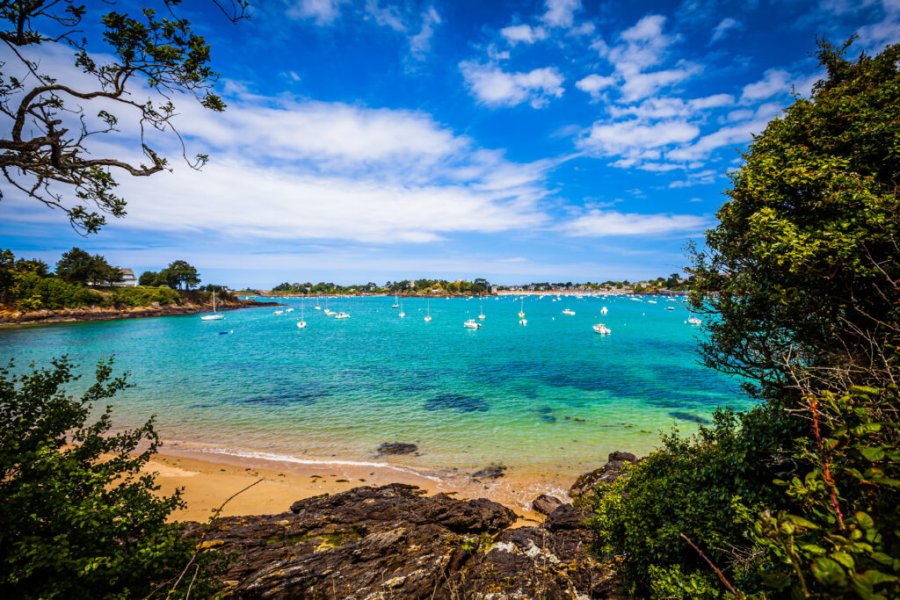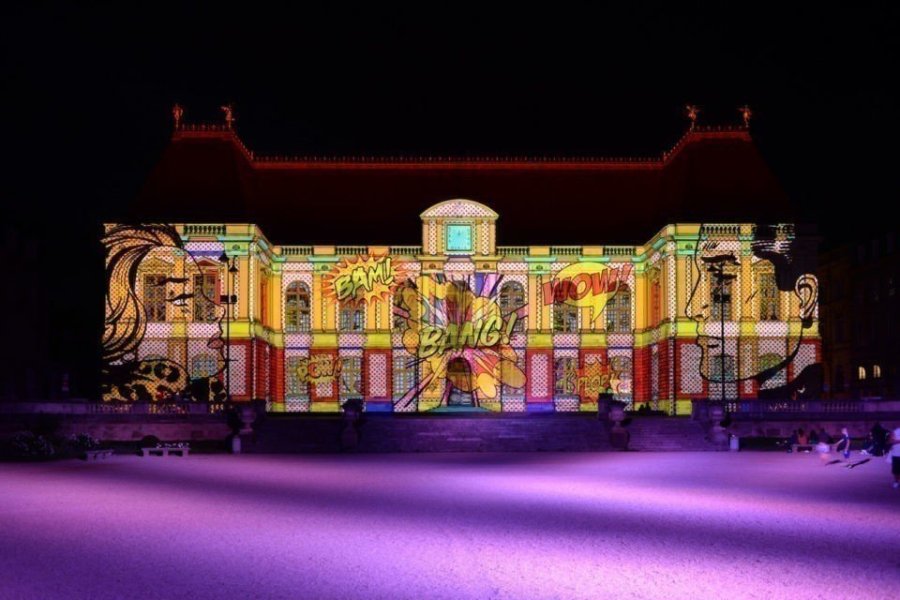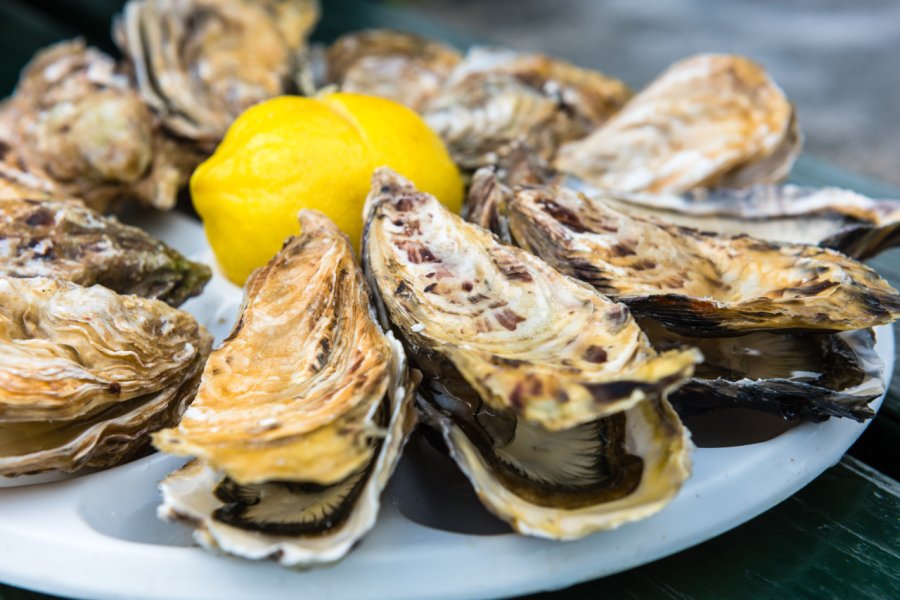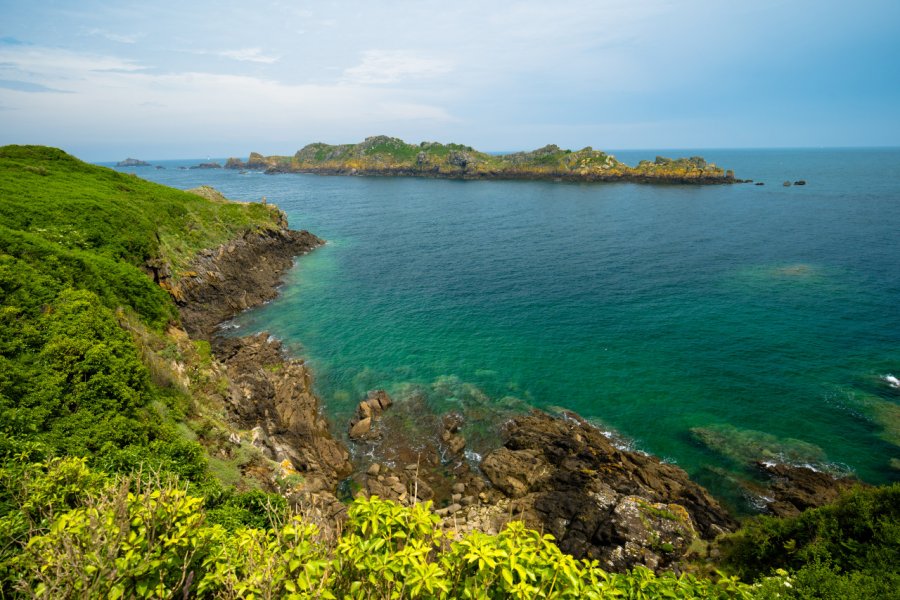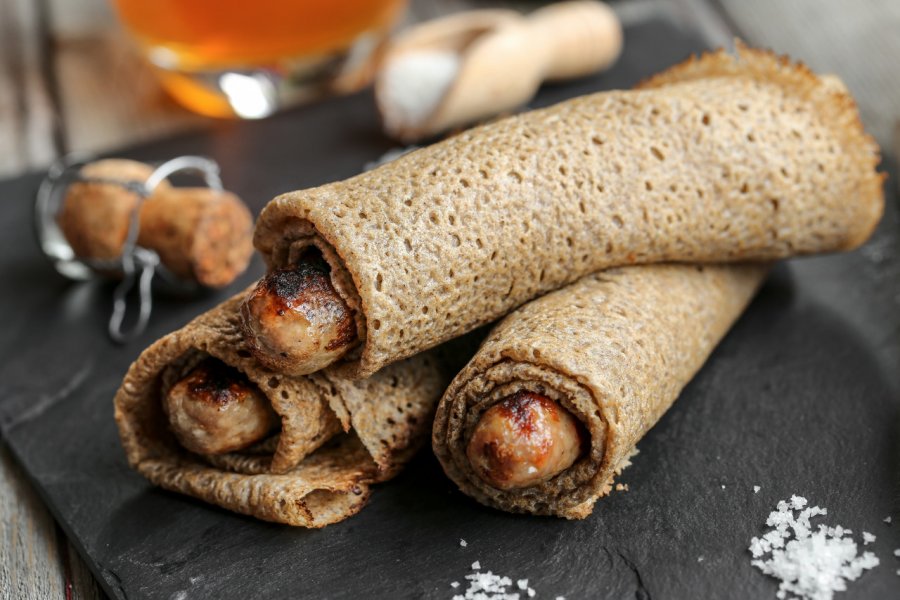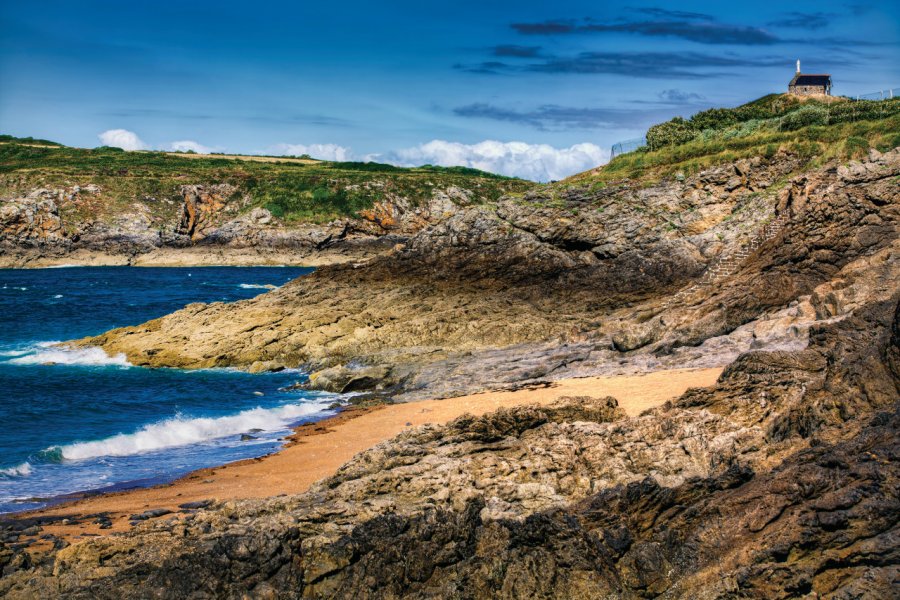Travel guide Saint Malo
The corsair city where Chateaubriand, Jacques Cartier and Robert Surcouf were born is without doubt the pearl of the Emerald Coast. Perched on a granite rock, at the mouth of the Rance River, the city, enclosed in its ramparts, proudly erects its high silhouette of granite and slate. Originally, Saint-Malo is an island, connected to the land by the narrow isthmus of the Sillon. The rock will be attached to Paramé in the eighteenth century. This position made it a natural stronghold that undoubtedly decided a destiny marked by incessant struggles and a fierce claim to independence. There is undoubtedly a Malouin soul, shaped by centuries of struggles on land and sea. The Malouins will always want to take their own destiny in hand, forging very early on a motto that proclaims loud and clear their beautiful independence: "Neither French, nor Breton, Malouin suis...". In addition to the ramparts, visit the castle, the Saint-Vincent cathedral, which houses the remains of Jacques Cartier. Among the museums, the museum of the Long Course Cap Hornier is in good place, as well as the Jacques Cartier museum. Not to be missed, the Route du Rock, its flagship festival, its international book and film fair Étonnants Voyageurs, the comic book and projected image fair Quai des Bulles, or the mythical Route du Rhum which takes place every 4 years. Among the walks to do, a tourist guide on Saint-Malo will tell you, the tour of the ramparts is a must, without forgetting to stroll on the beach of the Sillon or in the small paved streets of the city.
What to see, what to do Saint Malo?
-
Book an activity
-
Customized travel
- Addresses to visit Saint Malo
When to go Saint Malo ?
When to go to Saint-Malo? Probably all year round. Summer and winter, the weather is quite variable, and should not be an obstacle to a stay in Saint-Malo. Museums and points of interest are open all year round. Finally, it is perhaps the numerous and famous events that should decide the date of your stay in Saint-Malo: Route du Rock, Route du Rhum, Étonnants Voyageurs, Quai des bulles... Make your choice! If you still want to enjoy water sports, choose the summer period... as long as you book your accommodation well in advance!
Weather at the moment
Suggested addresses Saint Malo
Travel Saint Malo
-
Find a hotel
-
Car Rental
-
Find a local agency
The Emerald Coast is an area full of landscapes and heritage to discover. Along the streets, along the Rance, or along the coast, you will discover a rich region, as much in terms of culture, gastronomy, heritage, architecture and environment. It is because there is so much to discover and to know that we propose you these ideas of stay in order to optimize at best your stay. Thus, you will be able to choose the places which attract you the most, as well on the coast for the lovers of the sea, as in the back country for those which are more in love with the lands. From the Pointe du Grouin to Cap Fréhel, or from the country of Dinan to the banks of the Rance via Combourg, you won't be able to resist the incredible treasures the region has to offer. So many things to contemplate, visit, taste... which testify today to the exceptional attractiveness of the coast.
Find unique Stay Offers with our Partners
Featured articles Saint Malo
Events
Discover Saint Malo
Originally, Saint-Malo is an island connected to the land by the narrow isthmus of the Sillon. The city lives to the rhythm of the races ordered by Louis XIV and the ambitions of rich shipowners until the eighteenth century. The latter built private mansions and the famous malouinières in the surrounding countryside. In the 19th century, fishing towards Newfoundland developed and then gave way to the development of seaside tourism from the 1830s. The Second World War and the Allied bombings of 1944 destroyed a large part of the town. The town was rebuilt to its original state in 12 years and is steeped in history, which you will enjoy exploring as you walk through its streets. Discover the charm of a corsair city full of architectural, cultural and culinary treasures. Within the city walls, there is a unique atmosphere, which should not be overlooked in the other districts of the city, which should also be discovered!
Pictures and images Saint Malo
The 12 keywords Saint Malo
1. # Caps and tips

For beautiful iodized walks, we can only advise you to discover: the point of Grouin in the north of Cancale, the point of Meinga in Saint-Coulomb, the point of Varde in Rothéneuf, the point of Garde Guérin in Saint-Briac and of course the Fréhel cape which dominates the sea of 70 meters. Practical, the paths are very well marked.
2. # Corsair
Whether he was a shipowner, captain or crew member of an armed civilian ship, a privateer should not be confused with a pirate. In the 17th and 18th centuries, the privateer was protected by the law of war and by the king and only attacked enemy ships, usually merchant ships. Saint-Malo was the starting point of these races.
3. # Emerald

This choronym depicts the crystalline water with green reflections, reminiscent of the colored shades of the precious stone and that can be admired between Cancale and Fréhel. At the end of the 19th century, Eugène Herpin, a notable from Saint-Malo and author of guidebooks, invented and popularized the expression "Côte d'Emeraude" which then became part of everyday language.
4. # Oysters

Hollow, flat, wild, special or fine, and of all sizes, from Cancale or Fréhel, oysters are especially tasted "the months in R" because they are too milky if they are not triploid. Oysters are registered in the intangible cultural heritage of Unesco. To do: the oyster market in the port of Cancale, of course!
5. # Islands
Some of them are accessible at low tide like the Grand Bé or the Ebihens archipelago, others can be conquered like the Cézembre island or the Chausey islands. You can also observe from the ramparts of Saint-Malo, the Vauban fortifications (La Conchée). Some islands are home to many species of birds such as the islet of Colombière.
6. # Malouinières
Houses of holiday and reception, withdrawn in the countryside of Saint-Malo in Clos-Poulet, they symbolize the wealth and the rise of the shipowners and privateers of Saint-Malo in the 18th century. A hundred malouinières are still visible, including the Chipaudière in Saint-Malo and the Ville Bague in Saint-Coulomb, open to the public.
7. # The Rance
A coastal river of about a hundred kilometres, the Rance rises in the Mené mountains in Collinée, in the Côtes-d'Armor, and flows into the Channel between Dinard and Saint-Malo. The Châtelier lock marks the limits between the river Rance (fresh water) and the sea Rance (brackish water), subject to the shifting tides of the tidal power plant.
8. # Ramparts

The ramparts of Saint-Malo were built in the 12th century. They surround the city for about two kilometers. They were miraculously spared by the American bombing in 1944. You can also discover the Dol ramparts walk which offers a beautiful view on the Dol mount and the historical ramparts of Dinan.
9. # Route du Rhum
The famous single-handed race was created in 1975 to revive the West Indies' rum sugar industry. Every 4 years, monohulls and trimarans compete to link Pointe du Grouin to Pointe-à-Pitre. The speed record was broken in 2018 by François Joyon in 7 days, 14 hours, 21 minutes and 47 seconds. See you in 2022!
10. # The Furrow
The city of Saint-Malo was connected to the land by a sandbank called the Sillon, forming an island at high tide. With a length of 3 km, it is composed of the Grande plage, the plage de la Hoguette and the plage de Rochebonne. The breakwaters built to resist the onslaught of the waves make it special.
11. # Thalassotherapy
The virtues of seawater have been known since ancient Greece. In France, the first thalassotherapy treatments took place in the mid-19th century. Its Greek etymology means to heal by the sea. Enjoy the benefits of the sea at the historic Thermes marins de Saint-Malo (founded in 1880) or at the Thalasso de Dinard.
12. # Beach Villas
With the development of tourism in the 19th century, seaside villas were born. True works of architectural art, they are present all along the coast. From their bow-windows, they have unrestricted views of the sea. Some of them are real urban buttresses in case of storms or during high tides.
You are from here, if...
You watch the time before passing the Rance dam.
Here, you eat galettes, not salted pancakes. Moreover, you never eat sweet butter! Finally, you drink Plancoët, Val de Rance cider and Malouin's.
Your Proust's madeleines are the cracker and the gavotte !
You know why we eat oysters during the "r" months.
You know all about tides. So is it going up or down? You also have your own fishing spots and your own secret beaches away from the tourists!
You know how to tell a gull from a seagull.
You note the start of the Route du Rhum in your diary, and you have your tickets for the Dinard British Film Festival and the Route du Rock.
You know that the Couesnon (in its madness) has put the Mount in Normandy.
You know the difference between a corsair and a pirate.
You read the Pays Malouin and the Petit Bleu.
You have mimosas and hydrangeas in your garden.







